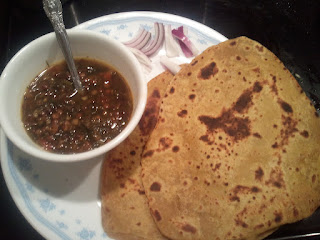Brussels Sprout is a kind of green leafy vegetable and looks like a mini cabbage. These tiny ones contain a chemical which has high anticancer properties. Its recommended to steam cook this vegetable in order to retain its nutrient values and fiber. As boiling this vegetable reduces its anti cancer compounds, its recommended to either steam cook, microwave or stir fry this vegetable. Its always challenging to introduce new vegetables in our regular cuisine. Initially, I added this tiny cabbage in our regular sambar, pappu charu. But I tried making few curries earlier. This version is the simplest one and also it retains the taste and nutrient values considerably as I adopt the steam cooking method.
Ingredients
Brussels Sprout - Between 15 to 20 of uniform size
Oil - 3 tsp
Salt - To Taste
Hing/Asafoetida - 1 Dash
Mustard Seeds -1 tsp
Urad Dal / Ulutham Paruppu / Minna pappu - 1 tsp
Curry Leaves - 5 or 6
Fresh Coconut Flakes - 1 tbsp
Dry Red Chillies - 1
Green chillies - 1 slit into two.
Grated Ginger - 1/2 tsp
Method
- Pick tiny Brussels sprout of uniform size if possible. Take out the extra stems from the sprouts and trim them. Wash them thoroughly and slit the sprouts in the middle into four or five portions. Don't cut the sprouts while making slits from the centre. Like how you make slits in a brinjal while making Brinjal Masala, you make similar slits into the sprouts too. Keep them ready.
- In a frying pan/kadai, add Oil first. When its heated, all the other ingredients for tempering. When its done, add all the Brussels sprouts at one shot and mix them well.
- Sprinkle few water and little salt and close the pan/kadai. Let the sprouts get cooked with the steam inside for few minutes. ( mostly 5-6 minutes)
- Add some more salt now and fry them openly for two minutes.
- Finally add the grated ginger, coconut flakes into the curry and serve.
- Its definitely a healthy curry and be a good substitute for our regular cabbage curry.
Tips
Don't overcook the tiny sprouts which in turn makes the curry soggy.







